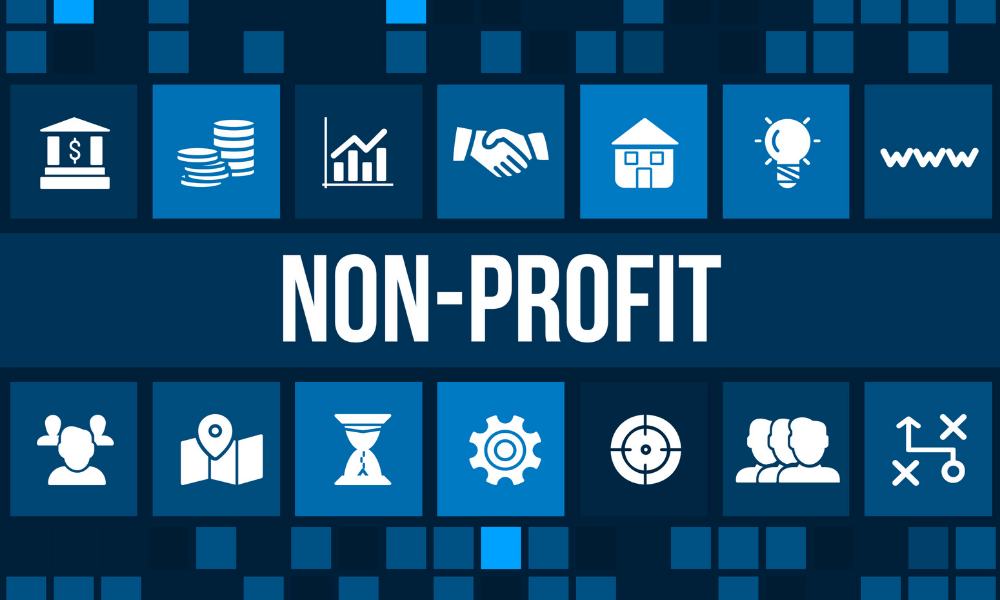For a long time, the nonprofit sector has lagged with regard to marketing. Some would say that the altruistic nature of the business contributed to this. True benevolence dictates that you give in silence. But, the environment is changing for nonprofits. They must adopt a more business-like way of operating to survive. Competition, decrease in donor funding, and transparency on resource use are taking center stage.
Nonprofit organizations have to seek funding. The sector is expanding in numbers, yet the donor pool remains constant. And, donors are demanding a greater need for transparency on resource use. Research on nonprofits’ digital spending in the UK and the US shows interesting insights. The expenditure rose by 20% in 2020. Larger organizations had a 40% increase from 2019.
Financial constraints or limitations on spending will continue to impact marketing. Donor funding tends to go towards supporting causes, not advertising or marketing activities. But, there are tons of marketing tactics nonprofits can use. We will share some workable ones below.
5 Best Marketing Strategies for Nonprofit Organizations in 2022:
1. Public Relations
If there is one thing common about marketing strategies for nonprofits is their goals. These include raising awareness of the organization. Marketing provides a way to reach donors and attract funding. Communication helps foster long-term relationships, and so much more.
The fact is nonprofits do good work, with an aim of changing the world. What better way to get publicity than to let others do the talking for you. PR provides an opportunity for third-party endorsement.
Nonprofit marketers can use the following tactics:
- Testimonials and reviews of success stories by donors and beneficiaries.
- Media stories covering the work of the organization.
- User-generated content from the different stakeholders.
- Network with like-minded individuals.
- Run education campaigns.
- Partner with influencers and bloggers to spread the word about your organization.
See Also: Tech Tools that Nonprofit Organizations Need
2. Digital Marketing for Nonprofits
Nonprofit marketing best practices include digital marketing. Nonprofit digital marketing is inexpensive, sometimes free. Yet, it does not reduce the impact of the tactics. There are so many strategies available to the teams.
The website, for example, is a powerful tool that provides so many opportunities. The teams can:
- The use of videos and storytelling to show what the organization is doing. Platforms like YouTube for nonprofits are easy to set up. It provides an avenue to reach millions, at a global level.
- Social media provides an avenue to reach millions of people. And, the organization can open an account on many platforms. The nonprofit digital marketing team must maintain an active presence at all times. It is so much more than only posting content. They must share, comment, like, and interact with audiences.
- PPC and organic SEO need budget allocation. They both present opportunities to generate tons of traffic to the website. The teams must then work on converting such audiences to loyal supporters. It is possible to do so, even with paid traffic.
3. Event Marketing
Events are important for nonprofit organizations. They provide an opportunity to meet and interact with the different stakeholders. When the pandemic hit in 2020, event managers had to re-strategize. Events had to shift to the online platform. Technological innovations like video conferencing helped a great deal.
But now, the restrictions on face-to-face meetings are being lifted. Marketing teams now have an opportunity to revive event activities.

You May Like: GoFundMe Alternatives | Conservative, Lowest Fee Fundraising Sites
4. Email Marketing
Email marketing continues to remain relevant as a way of communicating. With proper audience segmentation, targeting is easy. It improves open rates and chances of messaging reaching the intended recipients.
Some strategies to consider include:
- Ensure mobile accessibility with the email formats. Up to 78% of email opens occur on mobile devices. Remember, people like the convenience of using mobile phones. Not taking care of these demographics can lead to many lost opportunities. Include the right cues to nudge recipients to take a specific action. These include Call-to-Action (CTA) and donate buttons.
- Be consistent by scheduling send-outs. There are tons of tools that can help with email marketing.
- Email personalization will help with open rates. People are more likely to open an email addressed to them than a general one.
- Give subscribers an opt-out option. The more your emails land in junk or spam folders, the more it impacts your digital communication. Do note, the CAN-Spam Act has enforceable penalties for anyone breaching spam laws.
5. Sign Up To Google for Nonprofits
Nonprofit marketers should use all the resources available to them. One such resource is Google for nonprofits. The platform allows the organization to communicate its mission to audiences.
It also provides an avenue to engage with supporters, fundraise, and so much more. The only caveat is that nonprofits must pass the eligibility criteria.
Once you do, marketers have access to:
- Google Ad Grants that provides over $10,000 worth of advertising value.
- YouTube for nonprofits, which we talked about above. Adding a donate button allows you to collect funds on the platform. Best of all, Google takes care of all the transactional costs.
- Google earth and maps for tracking the organization’s activities. It provides a way to show the impact of their work.
Signing up to platforms like Google nonprofits has many advantages. Collecting and tracking donations becomes easy. And, the organization gets access to a broad subscriber base.
The digital marketing teams improve newsletter signups and get more volunteers on board. Do take the time to read up more on this free platform. Take note of user reviews to learn how to get the most out of it.
See Also: Best PayPal Alternatives for International Payments (SMBs)
Conclusion
Marketing for nonprofits is possible without a huge budget. In fact, the marketing team can achieve a lot without spending a cent. We have shared five effective strategies that can get you results. The power of PR lies in third-party endorsements. People are likely to believe what others say. Much more than they will believe in advertising or self-promoting messages. Digital marketing has unending potential.
Start with a website. Anyone looking for information will come to the site. Now, use the platform to showcase expertise, success stories, and so much more. Events and email marketing are also powerful tools for reaching target audiences. Finally, take advantage of free online platforms. We have highlighted Google for nonprofits. But, a little research should highlight many more.
Good luck generating brand visibility for your nonprofit organization. And, keep up with the positive, life-changing work you are doing.
Dan has hands-on experience in digital marketing since 2007. He has been building teams and coaching others to foster innovation and solve real-time problems. Dan also enjoys photography and traveling.





















